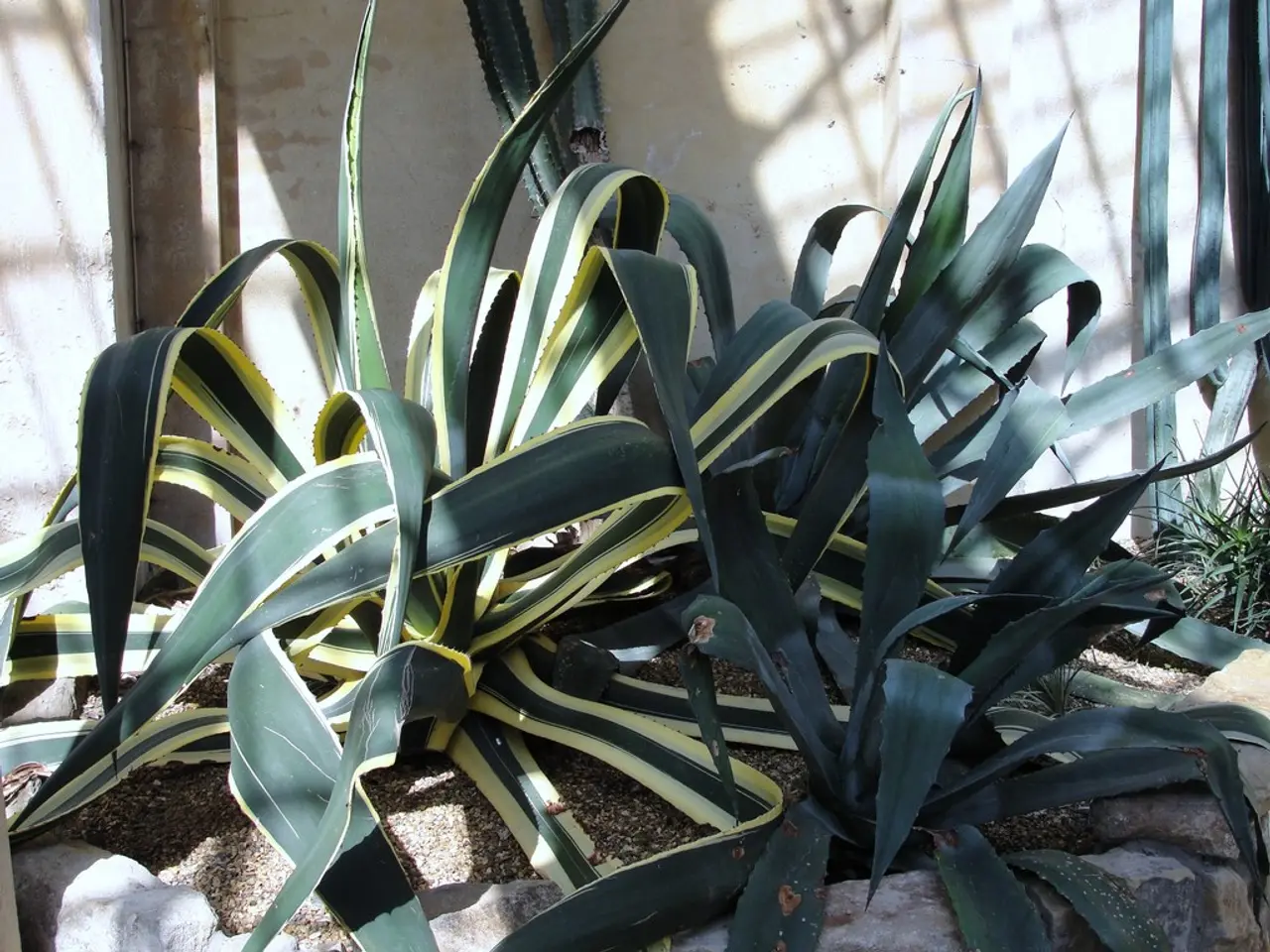Guide for Growing Pineapples in Your Personal Garden: Easy Steps for Amateur Horticulturists
Growing pineapple plants at home can be a rewarding experience, as these tropical delights not only add a touch of exotic charm to your indoor space but also offer delicious fruits. To ensure a successful pineapple plant growth, it's essential to provide the right conditions for soil, water, light, and temperature.
Firstly, choose a well-draining soil mix to prevent root rot. A loose, organic potting mix or a cactus/succulent mix works well. Opt for a pot with good drainage holes, and a pot around 12 inches in diameter is recommended. When planting the pineapple crown, bury it about an inch deep, keeping the base of the crown above soil level to avoid decay.
Watering your pineapple plant is crucial, but it should be done carefully. Water only when the soil feels slightly dry to the touch. Avoid overwatering as the plant does not like to sit in wet soil, which can cause mushiness or rot. After planting, gently moisten the soil but do not soak it. Allow the soil to dry out somewhat between watering.
Light is another essential factor for pineapple plants. Provide your plant with as much bright light as possible. Indoors, place the plant in a bright east, west, or south-facing window. If natural light is insufficient, supplement with LED grow lights for at least 12 hours daily. Outdoors, pineapples need at least 6 hours of direct sunlight per day.
Pineapples thrive in warm conditions, preferring daytime temperatures in the 70s to 80s °F (about 21–29 °C). Avoid temperatures below 60 °F (15 °C), as the plant is sensitive to cold and drafts. Pineapples also prefer higher humidity; placing the plant near a humidifier or grouping it with other houseplants helps increase ambient moisture.
Additional tips for growing pineapple plants include allowing the pineapple top to dry for 1-2 days before planting to reduce the risk of rot, and using a general-purpose slow-release fertilizer during the growing season. Be patient, as pineapples can take a year or more to fruit, and flowering ends the mother plant’s life cycle, but baby plants ("pups") may emerge for propagation.
With the right conditions, you can cultivate a thriving pineapple plant and enjoy the sweet rewards of homegrown pineapples. Remember, a combination of well-draining soil, careful watering, ample bright light, warm temperatures, and adequate humidity creates the best environment for growing pineapple plants successfully at home.
Sources: [1]
Start your home-and-garden project by selecting a well-draining soil mix, such as a loose organic potting mix or a cactus/succulent mix, for your new pineapple plant. To maintain a healthy lifestyle for your pineapple plant, water it carefully, providing just enough moisture to keep the soil slightly damp, without overwatering.




